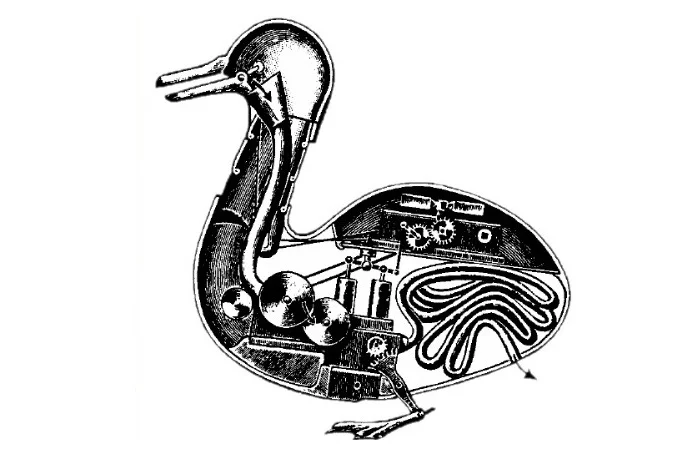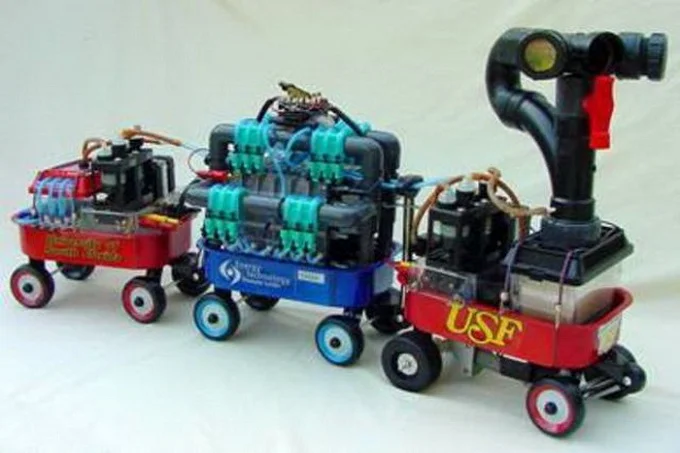“Robots” that get energy from real products: What gastrobots can do

Without robots, once thought writers, scientists, and just dreamers, the future is impossible. Well, the future, in a sense, has already arrived – and nothing is surprising in the fact that the predictions of science fiction writers come true, and smart machines more and more resemble people – both in “intelligence”, and skills, and the ability to interact with the environment.
It turns out that humanity has approached another interesting frontier, beyond which are robots that generate energy from food. The idea is not new – Jacques Vaucanson created the first “prototype” in 1739, but what about its implementation and effectiveness?
A robot that can do without a human
Pessimists do not need to sound the alarm yet – until the day when the robots will absorb all the products, and, what’s more, they will start to take living people for food, it is still very far away. But the direction of technical thought is promising – after all, with all its other advantages, modern robots, nevertheless, have a serious drawback: they cannot exist and function autonomously, independently of a person. Keeping any device running requires power, and there are many areas of research where it would be tempting to leave a robot alone with its task.
For example, when exploring the depths of the sea or a forest, and even for simple practical tasks, such as picking fruits and berries, a robot that performs its assigned tasks and receives energy without interruption from its main activity, at the same time, would be great. The same fruits, cut grass, seaweed, plants in the forest, or parasites in agricultural land, could become a source of power for such mechanisms – electric current.

How to do this – the first thoughts appeared quite a long time ago. It is no coincidence that in 1739 the French looked with admiration at the stunning exhibit, which was presented to their court by the inventor and mechanic Jacques de Vaucanson. It was a “duck that digests food” – metal, but the size of a natural one, inanimate, but able to flap its wings, quack, dangle its beak in the water. And also – to eat and drink, highlighting something very similar to what real ducks have to highlight after that.
“Hungry” robots: the XVIII century and the current century
Vaucanson presented his duck as a device with a small chemical laboratory inside – and, strictly speaking, it was not possible to refute this statement and convict the Frenchman of fraud: sometime later, after the death of the mechanic, the duck was examined by the magician Robert-Houdin, who discovered the trick with additional compartments, but only, quite possibly, he opened not the original Vocanson “bird”, but one of its subsequent repetitions. The duck itself is believed to have perished in a museum fire in 1879.
If, however, we leave alone this story of almost three hundred years ago and return to later times, we can see that throughout the 20th century, there were studies on the possible conversion of microbial activity into electrical energy.
The British researcher Michael Potter carried out the first experiments in 1911 and even got some results – but not so significant that the energy received could bring any real benefit. They returned to development later, and at the end of the millennium, a relatively real, tangible result of many years of research and dreams was finally presented.
The University of South Florida created “chew-chew”, a robot that could move on wheels at the expense of food. Project leader Stuart Wilkinson coined the term “gastrobot”, which refers to a smart machine that keeps itself going by digesting food. A microbial fuel cell functioned inside the device, the battery was charged thanks to the work of bacteria. According to the developers, any food could be used, even meat, but in order to have a minimum amount of waste (the system for their removal required a thorough revision), sugar cubes were used.

Technological breakthrough delayed
It was already relatively long ago – two decades ago. Why didn’t a seemingly revolutionary invention capture the minds of sensationalists and conspiracy theorists, who were confronted by robots capable, like people, of being, and thanks to this, they exist? It’s simple – the system showed its extremely low efficiency – it took about 18 hours to “charge”, after which Chew-Chew could work no more than a quarter of an hour. Alas, the robot itself was also unable to find and identify food – what the most primitive living organism can do is a super task for a robot, the solution of which is perhaps a matter of the future.
Therefore, real masterpieces in the “hungry robots” category are still ahead, however, such inventions are already very much awaited in various areas of human activity: for example, gastrobots would be a good help in the fight against agricultural parasites if they simultaneously caught pests and fed on them.
One way or another, the development of the idea of gastrobots will, apparently, bring closer those times when robots will become one of the versions of the human body, simply more enduring, stronger, and at the same time more primitive.
It is interesting that no matter what modern technologies acquaint the world with, once there were already assumptions about their appearance.




